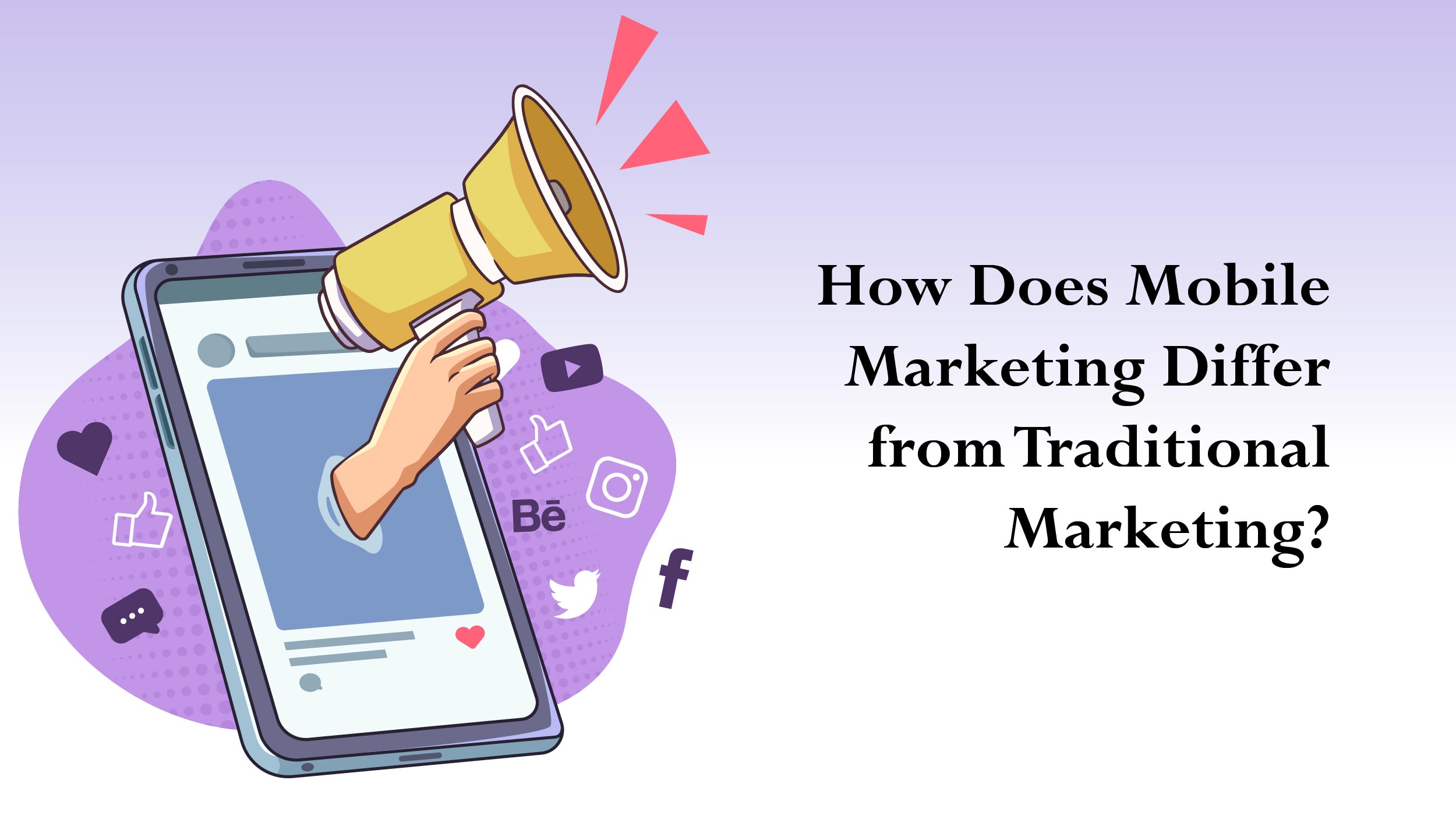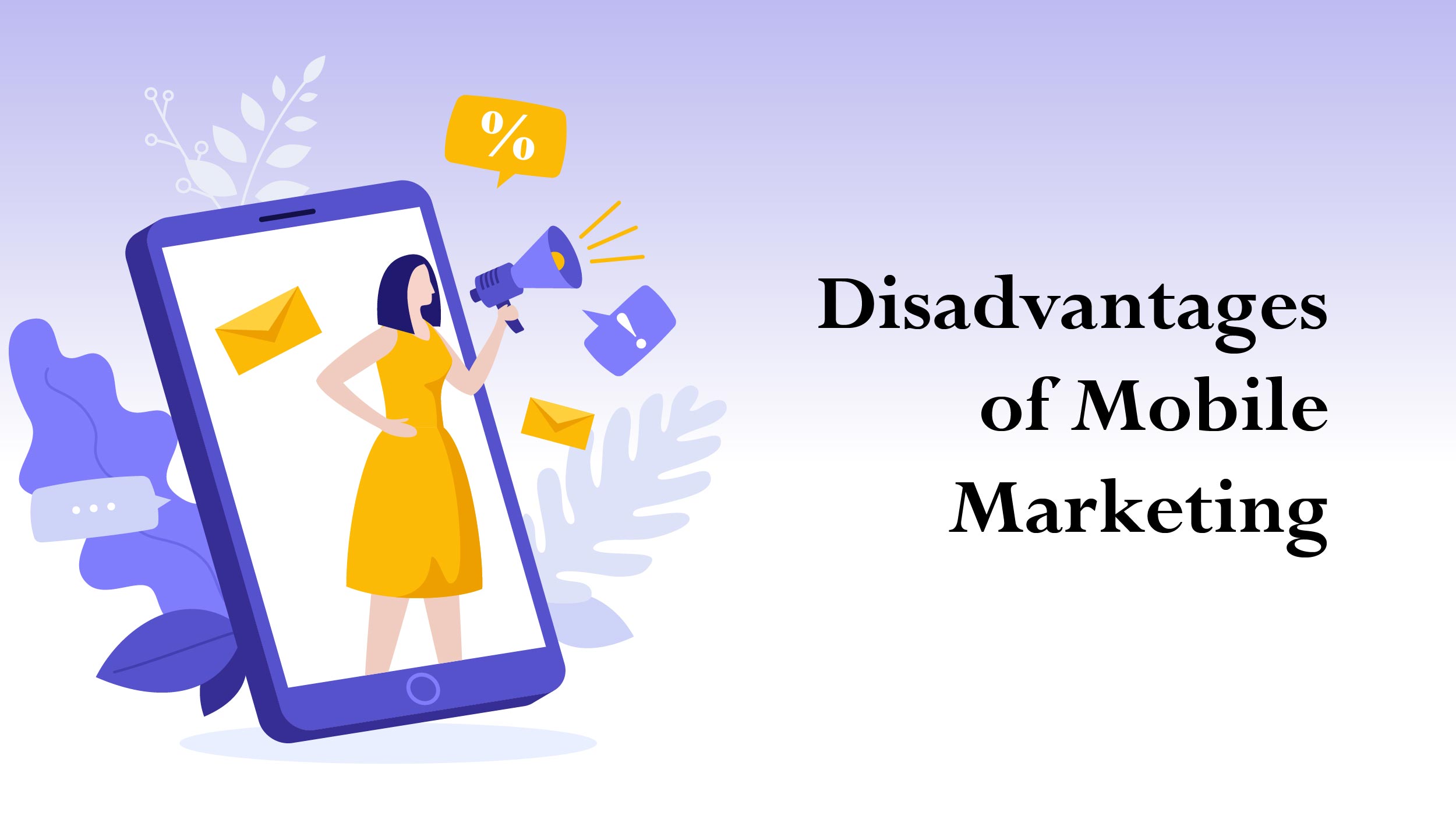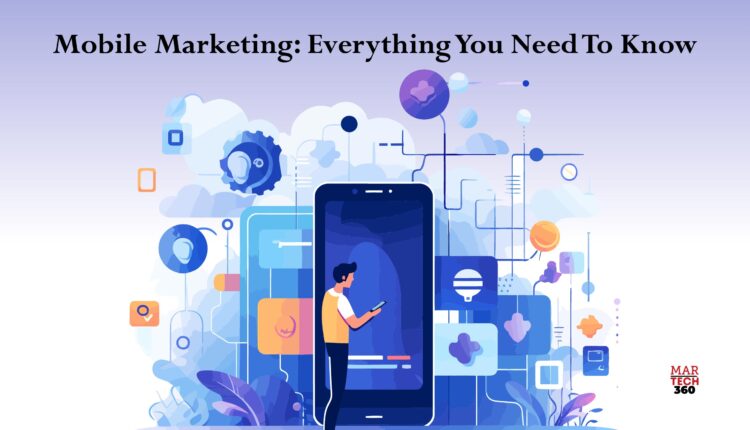Mobile marketing is any form of advertising that appears on smartphones and other portable devices, including tablets. Its main objectives are to reach a mobile device user population by using techniques including marketing emails, push notifications, and ads.
This article delves into everything you need to know about marketing in 2024
What is Mobile Marketing?
Mobile marketing refers to any form of advertising that uses mobile devices, such as smartphones and tablets, to promote products or services. It uses mobile technology, such as location services, to customize marketing efforts for personalization.
The main objective of mobile marketing is building brand awareness, brand image, boosting sales, establishing brand loyalty, and building a customer database.
How Does Mobile Marketing Differ from Traditional Marketing?
 Mobile marketing differs from traditional marketing in terms of connectivity. It takes advantage of the fact that lots of people carry their phones everywhere they go. This allows location-based services to gather client information and then provide coupons, discounts, or promotions based on how close they are to a store.
Mobile marketing differs from traditional marketing in terms of connectivity. It takes advantage of the fact that lots of people carry their phones everywhere they go. This allows location-based services to gather client information and then provide coupons, discounts, or promotions based on how close they are to a store.
These marketing programs can be more individualized and tailored to the particular user, which increases their effectiveness for the marketing organization.
For example, when creating a marketing plan, marketers must consider that SMS messaging is usually more restricted than in-app messaging, push notifications, or mobile-friendly emails.
Companies often have limits on using SMS marketing, mainly for tasks like password resets and account notifications. They should be aware of the marketing type and the specific mobile channels they plan to use.
How Does Mobile Advertising Work?
There are different types of mobile marketing like text messages, media messages, push alerts, in-app ads, and QR codes. It utilizes location trackers and location services to contact people based on where they currently are. With mobile devices everywhere, marketing has become a must-have for businesses.
Rather than focusing only on traits like age, mobile ads look at how people use their devices, like snacking, which is engaging with media for short periods. The type of device also impacts marketing plans; smartphone owners prefer informative material, while tablet users like ads with cool visuals and interactive features.
Advantages of Mobile App Marketing
89% of marketers who used location data to improve the effectiveness of their advertising campaigns reported an increase in sales.
Additionally, this type of marketing is very economical, with various options available for any budget, delivering a significant impact on the price. It allows for real-time communication with clients, wherever they may be.
Additionally, it also enables real-time communication between your brand and audience. That’s because a lot of users interact with ad-enabled experiences like grocery shopping, live-streaming films, listening to podcasts, or playing games on their mobile devices daily.
Statista study found that, excluding smartphone use for work, about half of US respondents spend five to six hours per day on their phones. 22% of respondents claimed they use their mobiles daily for 3-4 hours. Your brand can reach consumers where they already are, using the devices they already use, with mobile advertising.
Disadvantages of Mobile Marketing
 There are privacy concerns gathered by mobile devices and whether or not businesses have the right to gather such information without specific consent. If this information gets into the wrong hands as a result of data theft or inadequate information security, it could be used to commit identity theft or transmit spam. Also, some people might think that following someone’s whereabouts and movements goes too far.
There are privacy concerns gathered by mobile devices and whether or not businesses have the right to gather such information without specific consent. If this information gets into the wrong hands as a result of data theft or inadequate information security, it could be used to commit identity theft or transmit spam. Also, some people might think that following someone’s whereabouts and movements goes too far.
Additionally, marketing via mobile must be flawless from the beginning. A poor marketing strategy will fail to capture a user’s attention and may cause them to lose interest permanently because users have shorter attention spans and a variety of organizations compete for their attention.
Also Read: What’s Next in Mobile Marketing Trends? – Stay Ahead with these Insights
4 Free Tools For Mobile Marketing
Here are a few instances:
Facebook: Facebook provides several free marketing tools, such as the ability to create a business page, publish content, interact with clients via messages and comments, and manage focused ad campaigns.
Instagram: Owned by Facebook, this is another free marketing tool. Companies can utilize Instagram Stories and IGTV for extra marketing opportunities, as well as create an Instagram business profile, publish visually appealing content, and interact with followers.
Yelp: Known mostly as a review site, Yelp also provides free business advertising tools. With the help of these technologies, companies can interact with customers, respond to reviews, and maintain their online presence.
WordPress/Medium: Two of the most popular website and blog creation platforms are WordPress and Medium. They provide features and layouts that are optimized for mobile usage, enabling businesses to maximize their online presence.
Canva: Canva is a free design tool that lets companies make images for Facebook, Instagram, and other social media sites. It provides simple-to-use tools and templates for making visually appealing content.
Later: Later is a social media marketing tool that supports Facebook, Twitter, and Instagram in addition to other networks. It provides tools like performance analysis, scheduling capabilities, and a visual content calendar.
Getting Started with Mobile Marketing: A Step-by-Step Guide
Mobile marketing can feel overwhelming, but it doesn’t have to be! Here’s how to break it down:
- Know Your Audience: Who are your ideal customers? What challenges do they face? Understanding their needs is key.
- Set Clear Goals: What do you want to achieve with marketing via mobile? More website visits? Increased sales? Defining your goals helps you choose the right approach.
- Explore Your Options: There are many ways to reach your audience on mobile. Here are a few popular choices:
- Mobile-Friendly Emails: Make sure your emails look great on smartphones!
- Location-Based Marketing: Target customers based on their location (think in-store promotions).
- Choose the Right Tools: Once you know your goals and audience, you can find the technology that works best for you. This might be something simple or more complex, depending on your needs.
What Tools and Technology Do You Need for Effective Mobile Marketing?
Simple Marketing:
- SMS Text Marketing: This requires an SMS aggregator, a service that allows you to send bulk text messages to your customers.
Advanced Marketing:
- Mobile App Development: Building your own app requires a team of developers or working with a development partner.
- App Integrations: To connect your app with other marketing tools, you’ll need to consider data integration solutions.
Additional Considerations:
- Email Marketing Tools: These ensure your emails display correctly on various mobile devices and email clients.
Top 3 Examples of Mobile Marketing
Let’s have a look at how big brands make use of marketing strategies to attract customers.
Samsung
Samsung created interactive advertisements for the Galaxy S6 in collaboration with the Indian IT firm InMobi. When a user’s battery was running low, these advertisements developed a customized real-time battery identification mobile ad unit that showed the product and service to them with a demo on their phone. The mobile advertisement persuaded them to upgrade to the new phone by highlighting its “super fast charging capability” just as their battery ran low.
Pond‘s
Ponds is another company employing tunnel mobile marketing tactics, collaborating with InMobi. In a notable instance, when customers viewed an interactive ad for Pond’s acne remedies on their phones, the camera captured their facial features, emphasizing acne-prone areas. Unlike traditional ads, this approach didn’t prompt consumers to download additional software or visit external websites.
Nissan
The marketing of mobile apps is well illustrated by the example of this company. Nissan devised the “Evil Snowmen” commercial to promote its Rogue SUV. The commercial included footage of their rogue SUV battling a group of snowmen. Users could tap on hotspots in the advertisement to find out more about the characteristics of the SUV. Other sites also offered safety tips for the snow and weather.
Takeaway
Mobile marketing has become an essential strategy for businesses in today’s digital age. With the increasing use of smartphones and mobile devices, reaching and engaging with customers on mobile platforms has never been more crucial.


Comments are closed.